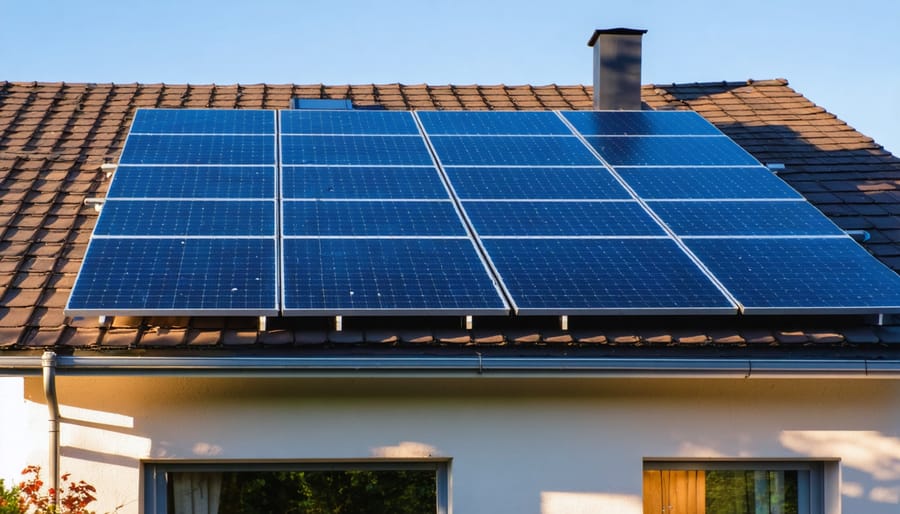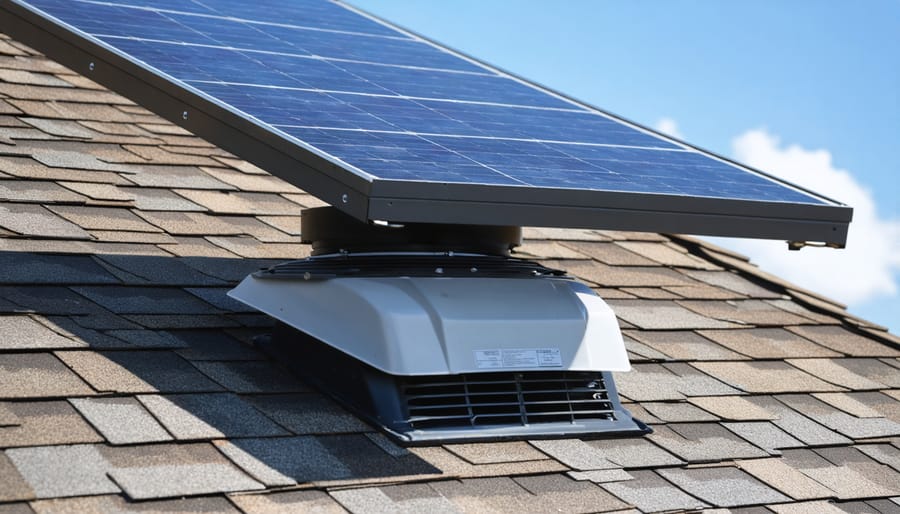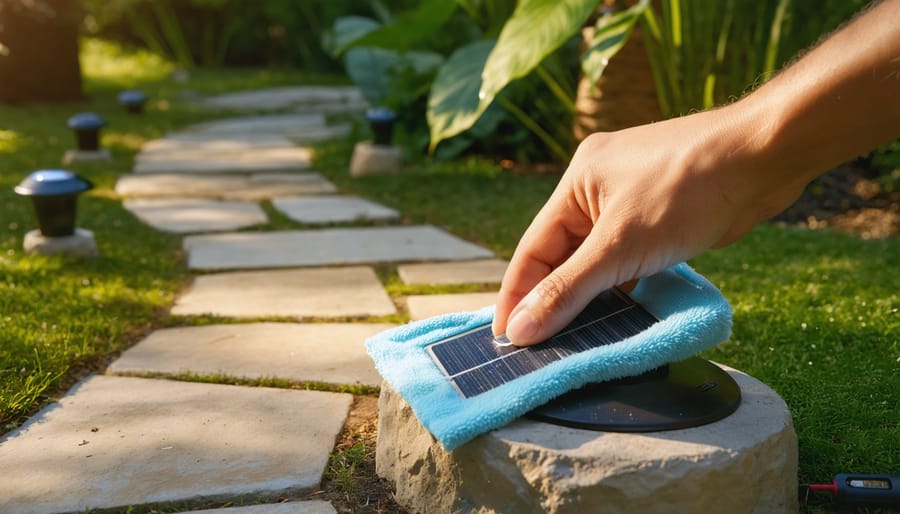Solar Panel Specifications Explained
Updated:

Solar panel specifications can seem like they are written in another language, but they aren’t that complicated. Not only are the terms easy to understand, but many solar panel specifications allow you to make better decisions for your needs and your home.
It is important to understand solar panel specifications to maximize your return on investment, provide green energy for your electrical needs, and ensure that they function properly for years to come.
This begins with having a good grasp of some important terms.
Key Terms You Should Be Familiar With
You may not want to check your solar energy system manual for fun. However, this technical paper discusses many important details that provide valuable insights into its proper use.
Here are the different terms you will encounter when checking your solar panel specification sheets.
Cells Solar Panel Specifications
Your solar panel is made up of solar cells that are wired together to form one cohesive panel.
Many modules have 60 cells in one series and panels with 72 solar cells wired together inside them. This type of solar panel has a higher output.
The solar panel brand you want to buy may not make their cells. Instead, they may buy the cells from a trusted manufacturer, and their job is to assemble the cells to form modules.
However, many of the popular brands make most of their cells.
You can ask your provider about this because many specifications do not include the manufacturer of the cells.
Temperature Coefficient
The solar cell temperature will affect its ability to generate electricity. This happens because heat limits the ability of electronics to produce power. For your solar power system, this is the temperature coefficient.
Each solar panel comes with a unique temperature coefficient. Once your solar cell temperature increases, your solar panel power output will decrease.
Crystalline solar cells usually have a temperature coefficient of -0.5%/degree Celsius. Most solar panel’s rated power is 25 degrees Celsius. And when it goes above this, factor in a 1 percent power loss for every 2 degrees Celsius of increased temperature.
Most solar panels in sunny countries can easily reach 50 degrees Celsius. So, the temperature coefficient is an important factor in how much electricity your solar system will produce.
Wind Load Solar Panel Specifications
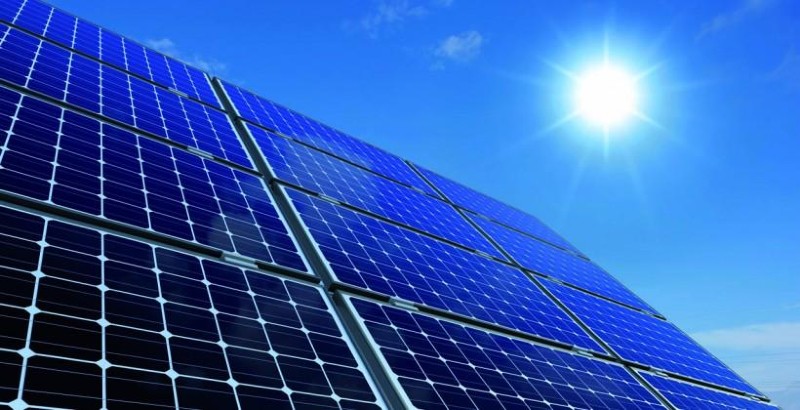
The static wind load is the wind force your solar panel can withstand without breaking. Your solar panel may withstand 2,400 Pa or 50 pounds per square foot, equal to 141 miles per hour.
This force is usually only present in hurricane situations. And if you experienced wind this strong, you may have experienced more damage to your home than just to your solar panels.
The wind load is also called the backside rating. This is because the back of the panel is where the wind blows against, turning the panel into something like a sail.
Wind can place a huge amount of force on your solar frames and the panel itself. So it’s important to ensure it measures up to the elements of nature in your area.
Snow Load Solar Panel Specifications
The static snow load refers to the pressure exerted on the solar panels from the weight of snow without causing damage or voiding its warranty, particularly during the winter.
Solar panels can hold between two to four feet of snow, depending on their density.
This is a high number, and it does not mean that a single snow dump of more than this amount will break your solar panel. It’s just the depth guaranteed by most manufacturers.
Warranty
Your solar panel will have two warranties. The first is the performance warranty, and the second is the equipment guarantee.
Performance Warranty
The performance warranty guarantees 90 percent production during your first decade of usage and 80 percent at two and a half decades of life.
Equipment Warranty
Meanwhile, the equipment warranty typically guarantees that your solar power system will run for 10 to 12 years without issues.
The Importance of the Warranty
The warranty of your solar panel does not only cover the panel itself. It also protects you against environmental issues, wear and tear, and manufacturing defects.
Like other warranties, it is more advantageous to protect your investment if the duration is longer.
When evaluating the warranty of your solar power company of choice, make sure to double-check these important parts of the warranty.
The warranty can help you enjoy your solar panel function without trouble for years. If you experience issues after solar panel installation, it may just be an issue with one panel or equipment, and your whole solar system will not stop its effective operation.
If the system fails, the manufacturer can send you a replacement to cover all the shipping and labor costs.
Comparing and evaluating the offered warranties of the solar companies in your area will give you peace of mind that you will have service and support if and when you ever face problems.
What Are the Other Important Solar Panel Specifications?
If you’re going to shell out a significant amount of money to give your home solar power, you must know what its specifications mean so you can effectively communicate your needs to the solar company of your choice.
You can easily find out the specifications of a solar panel by asking your installer about it.
If you want to explore your options, you can also check the website of the manufacturer.
Upon checking this information, you’ll notice that companies usually have various models, which do not offer the same wattages.
Once you know the panels you are interested in, download their datasheet to inspect their important characteristics.
Difference Between Polycrystalline and Monocrystalline
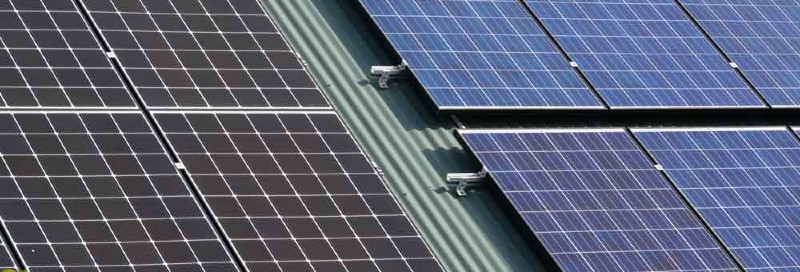
If you’re shopping for a solar panel system for your home, you’ll encounter the terms polycrystalline and polycrystalline. These two are usually referred to as “poly” and “mono” for short.
You may also encounter the term thin film. But this type of technology is still emerging and is not as common as poly and mono.
Polycrystalline Panels
The silicon cells in polycrystalline panels consist of smaller grains of silicone. In other words, it isn’t a single piece of silicone. This gives the poly solar panels a blue tinge and a flakey appearance.
When compared with mono solar panels, it also performs less efficiently. However, it is less expensive because its manufacturing process is not as complex as the mono panels.
Monocrystalline Panels
On the other hand, monocrystalline cells are cut from the same block of silicone that is unbroken. In making this panel, manufacturers require very high-quality silicone. This makes it harder to make than poly panels.
Because it is made from an unbroken crystal, it performs better even in low-light areas. Also, it can withstand high temperatures. It also has a black appearance that is preferred by many customers.
The mono solar panels also come with a higher price tag, and there are fewer models to choose from.
Wattage Explained Solar Panel Specifications
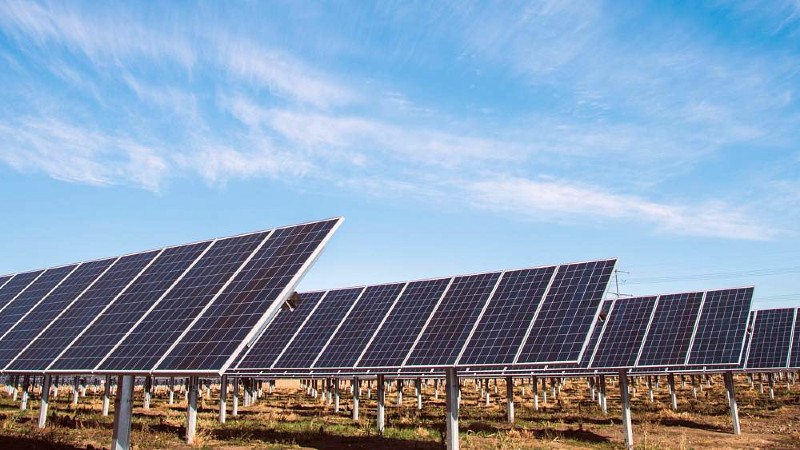
Solar panels are rated by how much direct current power they produce under standard test conditions, and the output is expressed in watts. This represents your panel’s theoretical peak power production under the ideal temperature and sunlight factors.
If you want to understand the different specifications of panels, you need to clearly know what a watt is. You may have heard this term before, but you may still be unsure of what it is.
A watt is the standard unit used to measure power. It was named after James Watt, a Scottish inventor who was behind the concept of horsepower when he studied what steam engines could do in the 18th century.
How Much Is a Watt?
One horsepower is equal to 1,746 watts, which is the average output of a draft horse. A person can only sustain a 75-watt output over a full day.
The power that is needed for electrical devices, generators, and solar panels to function is measured in this unit.
When you encounter solar energy systems, you must relate them to wattage and your power needs.
How Many Watts Does a Solar Panel Produce?
Solar panels have different wattages and sizes. A solar panel forms by combining different panels on a roof or ground area.
The output of solar panels is measured in watts. On average, a domestic panel system has a 265-watt output, but the range can run between 225 to 350.
The higher the solar panel wattage is, the more power it can produce under the same conditions.
To calculate the electricity your solar panel can produce in a day, you have to multiply the wattage by the number of peak sun hours in your area.
For instance, a home in Hawaii will get 8.41 hours of sunlight a day. A home with a 265-watt solar panel can generate 2,228 watt-hours (Wh) or 2.2 kilowatt-hours (kWh) of electricity in a day.
If the same home has a 350-watt solar panel, it can generate 2.8 kWh per day.
Understanding Your Power Output Is Key
Now that you know what wattage is, the next thing you need to find out is how much power output is needed in your home. This way, you can understand how the specifications relate to your needs.
Your power output depends on the amount of electricity you use and how much of your home you want to be powered by solar panels.
Consider Your Needs
If your house has a high energy usage, or you want to rely on solar panels for your energy needs completely, you should look for one with 300 watts or more.
For a vacation or home that doesn’t use much electricity, panels with around 225 watts may be fine.
Keep in mind that most homes have several panel connections, which are called solar panel systems. For example, a four-bedroom home may have a total of a 4 kW panel system. This would require between 12 to 16 panels.
Efficiency Solar Panel Specifications
Another thing you should understand before you read the specifications of your solar system is its efficiency. This refers to how much sunlight converts into electricity.
When your solar panel has high efficiency, you can fit fewer panels to achieve a high power output and cover less space on your flat roof or your bifacial solar structure.
There are solar panels today with 23 percent efficiency. Most average poly panels have an 18 percent efficiency.
However, the tradeoff for more efficient panels is that they are more expensive. Keep in mind that you can buy fewer panels to have the same wattage and potentially save money in the long run because of the smaller labor cost and lower hardware fees that high-efficiency panels require.
What Are Standard Test Conditions?

The cell efficiency of your panel is usually recorded in a lab setting using standard test conditions (STC). This involves having idealized conditions that will represent how the solar panels will perform.
STC is used for the effective comparison between different solar panels. This is because they use the same conditions for their reporting data.
However, keep in mind that the temperature can cause it to be less efficient when you have poly panels. Because of this, STC won’t accurately represent how well your panels will function in the real world.
Other Performance Numbers
To better understand your solar panels’ performance in the real world, it is important to examine the specifications. The solar performance includes the nominal operating cell temperature (NOCT), the PTC, or the CEC.
These industry test standards aim to represent how solar models work when installed in your home.
NOCT
Nominal operating cell temperature (NOCT) uses test conditions that center on the ambient temperature in the air. This is in contrast to the STS test, which uses the actual temperature of the solar panel.
This distinction is important to mention. A solar module sitting in the sun may be hotter than the air temperature, similar to how the hood of a car is hotter when sitting under direct sunlight.
Remember that the efficiency of the panel decreases when the normal operating cell temperature increases.
PTC and CEC
Meanwhile, the PVUSA Test Calculation (PTC) and California Energy Commission Test Conditions (CEC) test the models with a higher amount of incoming sunlight but the same conditions as the NOCT.
However, the CEC requests third-party testing aside from the data given by the manufacturer. This testing will allow consumers to ensure they get the performance promised by your solar panel specifications.
Different Output-Rated Solar Panel Specifications
Here are the output specifications you will encounter when reading your solar panel specification sheet.
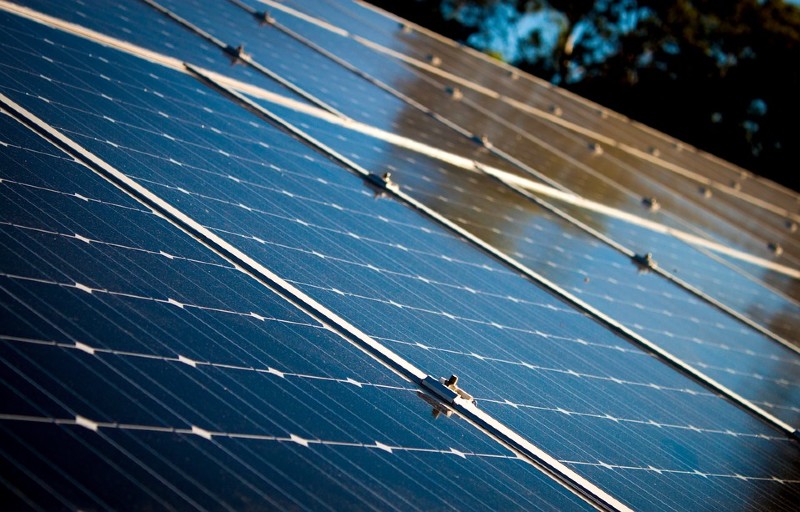 Open Circuit Voltage
Open Circuit Voltage
The open-circuit voltage refers to how many volts your panel outputs with no load. This measure is important because it is your solar module’s maximum voltage under test conditions.
So this is the number that you will use when determining how many panels you can wire in series to accommodate your solar charge controller or inverter.
Open circuit voltage is affected by temperature. However, the effect of temperature is very complex and differs from the type of cell technology.
The open-circuit voltage is usually highest during the morning when the sun rises quickly, and the panel’s temperature remains low.
The open-circuit voltage (Voc) plus 3.5 percent needs to be lower than the maximum voltage the solar charge controller allows.
Many controllers automatically shut down when the peak amount reaches. While some could still operate, this could negatively impact their lifespan. If you do not want your wires to overload, do not put too much voltage into your electronics.
Short Circuit Current
This refers to how many amps or current your solar panels produce when connecting to a load, but the plus and minus wires connect. If you measure using an ammeter across the two leads, you can find the short circuit current.
Short circuit current (LSC) plus 20 percent is used to determine the required handling capacity of the inverter or solar charge controller. Note that this number represents the highest current your solar panels can produce under test conditions.
However, it is also important to remember that tilting your solar panels under a blue sky during the summer will give you a greater current.
The Voltage at Maximum Power
The voltage at maximum power (Vmp) is when your power output is at its highest. This measure is the ideal voltage under standard test conditions (STC).
However, Vpm can change during the day due to shading, temperature, and soiling.
Vpm can be measured using a multimeter placed at the input terminals found at the MPPT controller when it’s in bulk-charge mode.
Current at Maximum Power (Lmp)
This measurement refers to the current or amps when there is maximum power output. Lmp is the actual amperage you will see when connected to a controller under standard test conditions on the bulk charge model. The current will vary depending on the sun’s strength on the panel.
Maximum PowerPoint
The maximum power point (Pmax) considers the ideal point of your panel’s output. This happens when the combination of the amps and volts results in producing the greatest wattage.
The maximum power point controller periodically measures the solar panel voltage under various loads. Then, it manages the solar input circuit. This controller balances the amps and volts and increases the solar panel power output in bulk charge mode.
Note that the wattage listed in your solar panel is the Pmax, in which the Pmax equals the Vmp multiplied by the lmp using standard test conditions (STC).
Do Not Be Scared to Read Your Solar Panel Specifications Sheet
Even though all solar panels may look the same to someone inexperienced in the field, you will encounter many choices for choosing the best brand.
Knowing what the data in your solar panel specification sheet means is vital if you want to know more about solar panels or compare one model to another.





